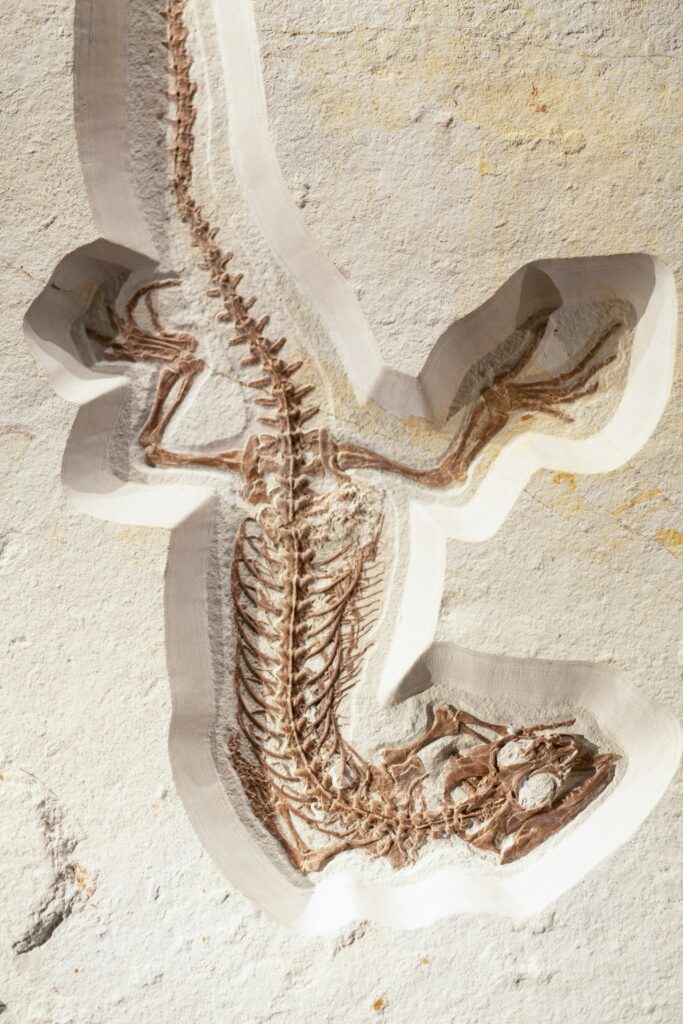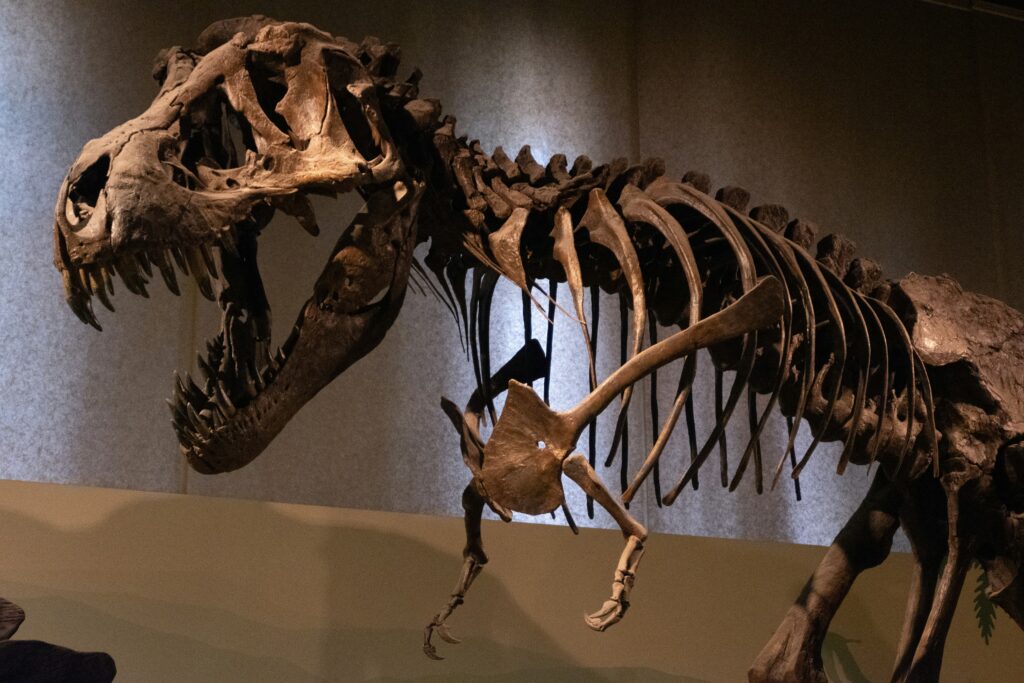
Photo by Mac Cervantes
How Dinosaur Fossils Became Billionaires’ Coveted Collectibles
Dinosaurs are dominating this summer’s headlines—not just at the box office with the blockbuster Jurassic World Rebirth, which has earned over $718 million worldwide, but also in the high-stakes world of fossil collecting. In July, a juvenile Ceratosaurus fossil sold for a staggering $30.5 million at Sotheby’s New York—five times its presale estimate of $6 million. Though it didn’t beat last year’s record $44.6 million sale of Apex, the most complete Stegosaurus skeleton ever found, these soaring prices highlight the growing demand for prehistoric treasures.
The Ceratosaurus, dating back 154 to 159 million years, stood just over 6 feet tall and nearly 11 feet long, with 139 original bone elements. Such megafauna fossils are no longer just scientific artifacts; they have become prized collectibles among the ultra-wealthy.
A Passion Rooted in History
Collecting dinosaur bones is not a modern fad. The practice dates back to ancient times, when Roman emperor Augustus reportedly amassed a collection of massive bones described as belonging to “giants.” The scientific term “dinosauria,” meaning “terrible lizard,” wasn’t coined until 1842 by British scientist Richard Owen, but the fascination has deep roots.
Today’s market is thriving, but it also raises ethical concerns about access, provenance, and the privatization of science, with experts calling for stronger regulations.
Who Is Buying Dinosaur Bones?
The buyers span private collectors, institutions, and even governments. For example, Abu Dhabi acquired Stan—a complete T-Rex fossil—for $31.8 million at Christie’s in 2020. Stan will be displayed at the new Natural History Museum opening in Abu Dhabi’s Saadiyat Cultural District in December 2025.
Hollywood celebrities like Nicolas Cage, Leonardo DiCaprio, and Russell Crowe have also jumped on the fossil bandwagon.
“We all grew up with dinosaurs, and we all love them,” says Nicolai Frahm, London-based art advisor and collector, who has brokered several high-profile sales, including Stan and a 12.4 million-dollar raptor skeleton.
Hedge fund billionaire Ken Griffin, who purchased Apex, echoes this sentiment: “I’ve always loved dinosaurs… To make sure that Apex stayed here in America to inspire generations of children about science was an opportunity I could not pass up.” Apex is now on view at the American Museum of Natural History in New York.
What Collectors Look For
Fossils are increasingly prominent at art fairs like Frieze Masters, attracting new interest. David Aaron Gallery will showcase a juvenile Triceratops skull this October, priced at £580,000 ($782,409).
“Skulls, meat-eaters, and complete skeletons suited for interior display are always in demand,” Aaron says. Condition and provenance are critical, with buyers becoming more conscious of both.
This was underscored in 2022, when Christie’s withdrew a Tyrannosaurus rex skeleton named Shen from a Hong Kong sale after experts noted it contained too many replica bones.
Aaron advises, “Collectors should focus on complete, well-preserved fossils with solid provenance documentation, and seek advice from reputable consultants.”
Legal and Ethical Challenges
The fossil trade exists in a complex legal landscape. In the U.S., where many top fossils originate, it’s legal to excavate, sell, and export fossils found on private land or with landowner permission. This clear framework explains why many record-breaking fossils come from the U.S.
However, complications arise when fossils come from federal lands or foreign countries, leading to legal disputes and calls for greater oversight.

Photo by Markus Spiske
The Dark Side of the Fossil Trade: Legal Troubles and Ethical Concerns
While dinosaur fossils have become highly sought-after collectibles, the booming commercial market raises serious ethical and legal issues.
Take fossil hunter Peter Larson, who runs the Black Hills Institute of Geological Research in South Dakota. In 1996, Larson was jailed for 18 months on customs violations after being accused of illegally removing fossils from public lands. Similarly, dealer Eric Prokopi was convicted and jailed for three months in 2013 for smuggling fossils from abroad.
Even celebrities are not immune to controversy. In 2015, Oscar-winning actor Nicolas Cage returned a dinosaur skull he had purchased for $276,000 in 2007 to the Mongolian government, after discovering the fossil might have been stolen. Reports suggested a link to Prokopi, as the gallery from which Cage acquired the skull had bought and sold fossils connected to the convicted dealer.
Commercial Excavations: Profits vs. Preservation
Commercial fossil hunters excavate relics at roughly twice the rate of museums, selling finds to the highest bidders. This rapid extraction often comes at the cost of scientific study and preservation. States like Montana, Wyoming, and the Dakotas are hotspots for these operations. Collectors such as Nicolai Frahm sometimes receive calls from the field alerting them to new discoveries, underscoring the fast-moving and competitive nature of this market.
The Consequences of Fossil Privatization
The skyrocketing prices for fossils have effectively priced out many museums and scientific institutions seeking to acquire specimens for research and public education. A study led by paleontologist Thomas Carr found that 71 T. rex fossils are in private hands, compared to just 61 held in public trusts. Only 11% of commercially excavated fossils make it to public institutions. Carr criticized commercial interests as “thieves of time,” noting that public T. rex samples would more than double if not for the profit-driven fossil trade.
American paleontologist Steve Brusatte warns that fossils turned into “toys for the rich” are effectively lost to science—locked away in private mansions and inaccessible to researchers and the public.
There are also concerns about fossils being removed from Native American lands without permission, raising further legal and ethical questions.
Scientific Value vs. Market Value
Some fossils sold by commercial dealers are rejected by museums and paleontologists as “scientifically useless” if not held in public trust. Jack Horner, former lead paleontologist at Montana’s Museum of the Rockies and inspiration for Jurassic Park’s Alan Grant, has criticized this trend. In 2019, many U.S. paleontologists called for a global ban on the commercial sale of dinosaur fossils to protect scientific integrity.

Photo by Tofan Teodor
